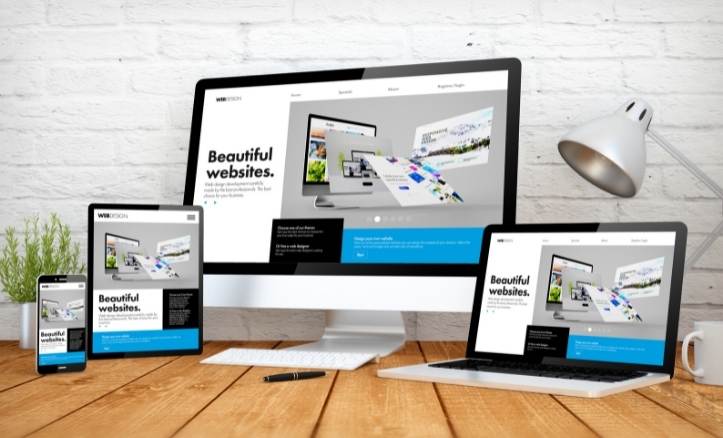Branding companies strongly believe that your website should be the reflection of your business. But more importantly, it should be a reflection of your users. When users have a familiar feeling or a sense of relatability, they tend to stick around better to your website.
Your journey to website design travels through multiple stages. The stage that we are talking about is the pre-planning stage. In this stage, your ideas are running wild and are all over the place. In order to get on track, you need to start exploring ideas around exceptional customer experience.
Creative agencies across the world follow prototyping to foresee a proposed product and determine how to make it better. During the process, brands get their team to ideate on a concept, play around with the idea for improvising it, and chart out an approach to breathe life into this paper idea. That’s how the idea evolves into a digital product for real-life end users.
Why Does Your Website Design Need Prototyping?
If you ask a web design company, they will tell you so much about the importance of wireframes. With a quick and frequent approach pertaining to prototyping, you can develop a refined digital product. Based on the project specification as well as the personal preferences of your project, you can evaluate the fidelity and type of your digital product using a great prototype.
In addition to this, prototyping is a great tool to ensure seamless testing for user intent toward your digital product. Outcomes coming from your tests can help you know your users better and, in turn, enable you to create a stronger digital product. It won’t be an exaggeration to say that prototyping is one of the best ways to curtail the risk associated with your mobile application or website.
Prototyping, in a way, is a channel to test ideas quickly without having to spend a lot of time, energy, and resources. The key pointer here is to understand why a prototype is useful for brands. With the right prototype approach, you can get effective insights and feedback to meet the user requirements of your digital products.
Below are some of the best benefits of prototyping for website design:
● Discover New Concepts:
When you opt for web design services, your website design agency will get in touch with you to understand your requirements. In that case, you will have a certain idea in mind about your desired outcome. However, when you include the prototyping stage, you will be able to explore your basic idea to new tangents.
● Reduce Iterations and Cost:
Prototyping enables your product team to reduce the number of reworks and iterations on your live products, thereby visibly minimising the website development costs. When your end users validate your users right during the website designing stage, you can reduce the potential bugs and issues, which could lead to a seamless end user.
● Successful and Timely Launch:
A successful digital launch of your website can be possible if you approach each step of website development in a measured manner. When there are fewer iterations during your website design and development process, you can launch your website in a timely manner.
What are the Best Prototyping Tips for your Website?
There are multiple prototyping techniques that you can follow to leverage the benefits and the trust of your end users. However, there are certains tips and strategies to follow while using your prototyping approach. Let’s explore these prototyping tips:
● Your prototype should be Toned to the Pitch of your End User:
The best way to achieve success during prototyping is to opt for participatory design. The participatory design includes users in the feedback loop during the designing process. You can achieve a participatory design in myriads of ways–paper prototyping practices, brainstorming sessions, and user testing.
The true intent behind the participatory design is to involve your end users to a large extent. As a result, they can provide you with the necessary insights pertaining to the challenges associated with the user experience and usability of your website. When you can identify what’s working and what’s not working for your website at the early stage of your website development process, you can save a lot of time and be sure about getting your user engagement high with your final digital product.
● Your Focus should be on Charting Out the User Flows and Scenarios:
If you think that your prototypes just need to be pretty and appealing, you might be partially wrong. Prototyping a website isn’t only about making your website beautiful, but it’s about testing the water before it flows. Prototyping can help you determine the sales potential of your website.
The flow of your website has to be aligned with the search intent of your end user to drive them to the sales page in the least clicks possible. The first step to achieving the best-case scenario with your website is to sketch your website’s flow through which your audience can navigate the intended path.
● Simplicity is an Asset for Prototyping:
If you get what you need with less hustle, you are naturally happier. Similarly, when your end users are able to get to their desired page with less friction, it enhances their experience with your website. The key is to create a simple prototype. However, simple doesn’t mean boring. You can create an interesting prototype while working on simple designs. Ensure that your navigation is simple and offers fewer clicks to your users before they get to their desired place on your website.
● Responsiveness is What Keeps you Ahead in the Race:
With new devices evolving every single day, it might not come as a surprise to you that your current website needs to stay up-to-date. If your website doesn’t look good or appealing on new devices, the reach and the conversion that you seek from your website might not be in the desired proportion.
In such a case, it is best for you to develop a responsive website that works well with devices that require forward and backward compatibility. If you ensure to design a responsive prototype, you can target more end users and expect the best outcomes for your website.
● Test Before you Rest:
Since the very need for prototyping is to be able to test the waters before your launch your digital product into the real world, it is crucial that you have a set of use cases prepared for your website. You should test your prototype before the user test so the early bugs and fixes can be resolved. Once you are done with the testing from your end, you can seek help from your end users and follow their feedback to bring improvements to your website design.
Key Takeaways
- Approach prototyping with as much consciousness as the final product to save time.
- Explore multiple ideas during your prototyping stage to get the best benefit of the process.
- Keep your users at the center of the design.
- Anything complex is not worth the pain. Simple is successful.
- Test. Test
Check what works, retain, redesign, and repeat
Author Bio:
Brijesh Jakharia co-founded SPINX Digital in 2005 and takes great pride in crafting web and mobile marketing solutions for mid-market businesses to enterprises. Marketing is his passion, and the thrill to build a brand from the ground up has helped him craft successful brand stories for world-class clients. While not at work, he loves to spend his time on research and reading digital content stories
Read Dive is a leading technology blog focusing on different domains like Blockchain, AI, Chatbot, Fintech, Health Tech, Software Development and Testing. For guest blogging, please feel free to contact at readdive@gmail.com.





